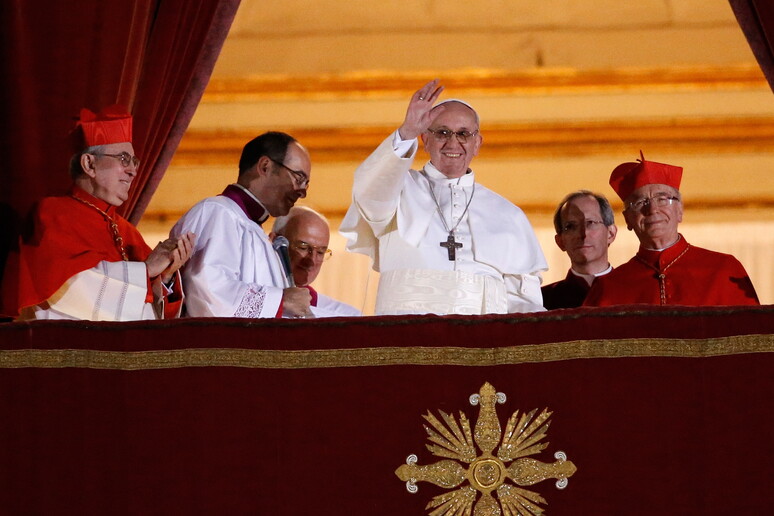With the death of Pope Francis, the
most important figure in the Church becomes the Camerlengo, the
cardinal who presides over the Apostolic Chamber.
Among his main tasks is to officially confirm the death of the
Pontiff, to take care of and administer the assets and temporal
rights of the Holy See during the Sede Vacante and,
subsequently, to ensure the utmost confidentiality of the voting
operations during the Conclave.
Since February 14, 2019, the Camerlengo has been the American
Cardinal, of Irish origin, Kevin Joseph Farrell.
The Camerlengo is the figure who, upon receiving the news of the
death, must officially certify - calling him three times - the
death of the Pontiff in the presence of the Master of the
Pontifical Liturgical Celebrations, the Cleric Prelates and the
Secretary and Chancellor of the Apostolic Chamber, who will draw
up the document or authentic death certificate.
This ceremony will take place for the first time for Francis in
the chapel of Santa Marta.
The Camerlengo must also seal the study and the bedroom of the
Pontiff, arranging that the personnel who usually live in the
private apartment can remain there until after the burial of the
Pope, when the entire papal apartment will be sealed.
His task is also to communicate the death of the Pontiff to the
Cardinal Vicar for Rome, who gives notice to the Roman people
with a special notification, and also to the Cardinal Archpriest
of the Vatican Basilica.
The Camerlengo must also take possession of the Apostolic
Vatican Palace and, personally or through his delegate, of the
Lateran Palace and Castel Gandolfo, and exercise their custody
and government.
He must also establish, after hearing the Cardinal Heads of the
three Orders, all matters concerning the burial of the Pontiff,
unless the latter has manifested his wishes while alive.
Francis has said he wants to be buried in the Basilica of Santa
Maria Maggiore (St Mary Major), like seven of his predecessors,
and not St Peter's.
From the moment the beginning of the election operations has
been ordered, until the public announcement of the election of
the Supreme Pontiff after the famous plume of white smoke from
the Sistine Chapel chimney, the rooms of the House of Santa
Marta and in particular of the Sistine Chapel and the areas
intended for liturgical celebrations, must be closed, under the
authority of the Camerlengo to unauthorized persons.
The Camerlengo, assisted by three cardinals, ensures that the
confidentiality of what happens in the Sistine Chapel, where the
voting operations take place, and of the adjacent rooms, both
before and during and after such operations, is not violated.
In particular, also using two trusted technicians, he protects
secrecy, ensuring that no means of filming or audiovisual
transmission is introduced by anyone into the premises where the
election is taking place.
All the cardinal electors must hand over to the camerlengo or to
one of the three cardinal assistants any writings of any kind
that they have in their possession relating to the outcome of
each ballot, so that they may be burned with the ballots.
At the end of the election, the camerlengo must draw up a
report, which the three cardinal assistants must approve, to
declare the outcome of the voting of each session.
This report will be handed over to the new Pope and then kept in
the appropriate archive, enclosed in a sealed envelope, which
may not be opened by anyone unless the Pontiff has explicitly
permitted it.
ALL RIGHTS RESERVED © Copyright ANSA











